This pub is closed permanently. Your nearest Wetherspoon pub: The John Wallace Linton
A grade II listed building, previously the Queen’s Hotel, this three-storey premises opened in 1863, soon after Bridge Street was laid out. Named after the reigning monarch, Queen Victoria, it dominated the western end of Bridge Street which soon became known as Queen’s Square. The name Queen’s Hotel can still be seen high up on the front of the building.
Photographs and text about The Queen’s Hotel.
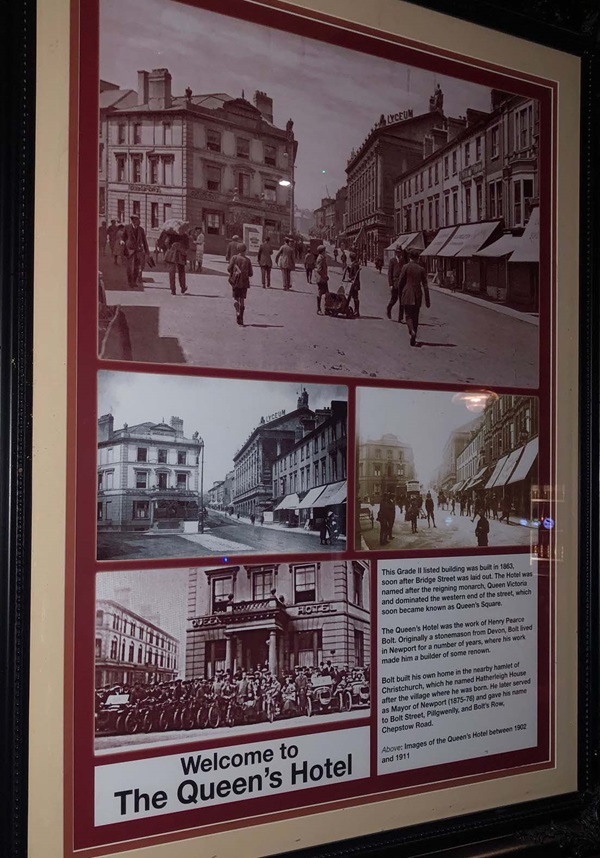
The text reads: This grade II listed building was built in 1863, soon after Bridge Street was laid out. The hotel was named after the remaining monarch, Queen Victoria and dominated the western end of the street, which soon became known as Queen’s Square.
The Queen’s Hotel was the work of Henry Pearce Bolt. Originally a stonemason from Devon, Bolt lived in Newport for a number of years, where his work made him a builder of some renown.
Bolt built his own home in the nearby hamlet of Christchurch, which he named Hatherleigh House after the village where he was born. He later served as mayor of Newport (1875-76) and gave his name to Bolt Street, Pillgwenlly, and Bolt’s Row, Chepstow Road.
Above: Images of the Queen’s Hotel between 1902 and 1911.
Photographs and text about Lord Tredegar.
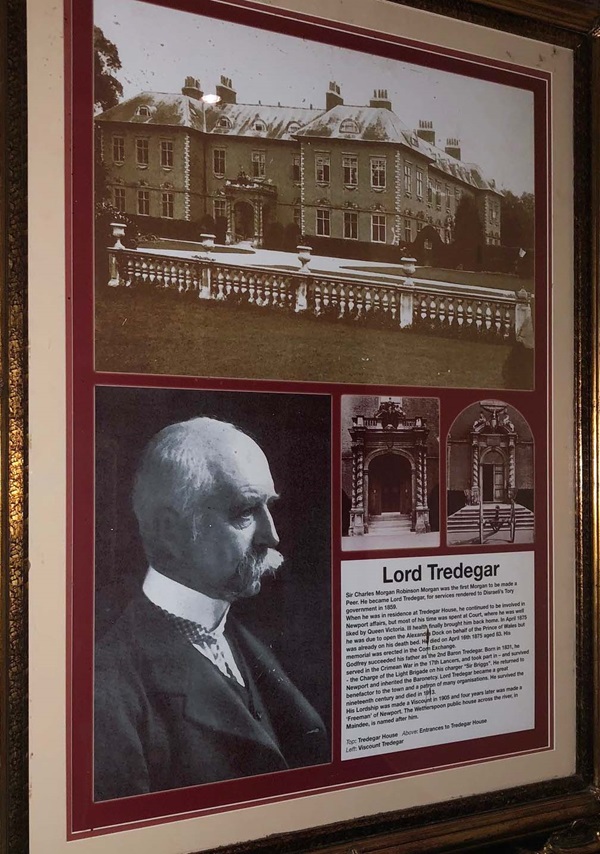
The text reads: Sir Charles Morgan Robinson Morgan was the first Morgan to be made a Peer. He became Lord Tredegar, for services rendered to Disraeli’s Tory government in 1859.
When he was in residence at Tredegar House, he continued to be involved in Newport affairs, but most of his time was spent at Court, where he was well liked by Queen Victoria. Ill health finally brought him back home. In April 1875 he was due to open the Alexandria Dock on behalf of the Prince of Wales but was already on his death bed. He died on April 16 1875 aged 83. His memorial was erected in the Corn Exchange.
Godfrey succeeded his father as the 2nd Baron Tredegar. Born in 1831, he served in the Crimean War in the 17th Lancers, and took part in – and survived – the Charge of the Light Brigade on his charger Sir Briggs. He returned to Newport and inherited the Baronetcy. Lord Tredegar became a great benefactor to the town and a patron of many organisations. He survived the nineteenth century and died in 1913.
His Lordship was made a Viscount in 1905 and four years later was made a ‘Freeman’ of Newport’.
The Wetherspoon public house across the river, in Maindee, is named after him.
Top: Tredegar House
Above: Entrances to Tredegar House
Left: Viscount Tredegar.
Prints and text about Sir Charles Hanbury.
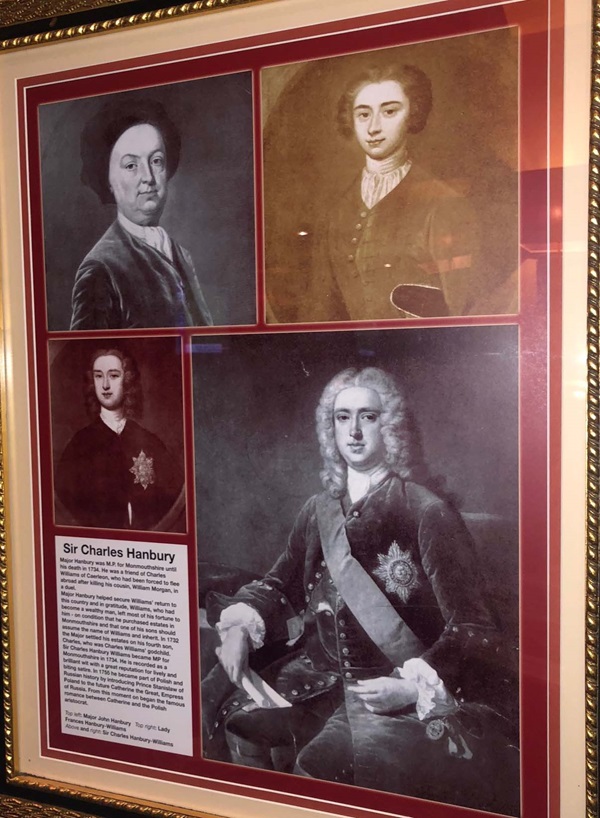
The text reads: Major Hanbury was MP for Monmouthshire until his death in 1734. He was a friend of Charles Williams of Caerleon, who had been forced to flee abroad after killing his cousin, William Morgan, in a duel.
Major Hanbury helped secure Williams’ return to this country and in gratitude, Williams, who had become a wealthy man, left most of his fortune to him – on condition that he purchased estates in Monmouthshire and that one of his sons should assume the name of Williams and inherit. In 1732 the Major settled his estates on his fourth son, Charles, who was Charles Williams’ godchild. Sir Charles Hanbury Williams became MP for Monmouthshire in 1734. He is recorded as a brilliant wit with a great reputation for lively and biting satire. In 1755 he became part of Polish and Russian history by introducing Prince Stanislaw of Poland to the future Catherine the Great, Empress of Russia. From this moment on began the famous romance between Catherine and the Polish aristocrat.
Top left: Major John Hanbury
Top right: Lady Frances Hanbury-Williams
Above and right: Sir Charles Hanbury-Williams.
Illustrations, a photograph and text about ‘New Castle’.
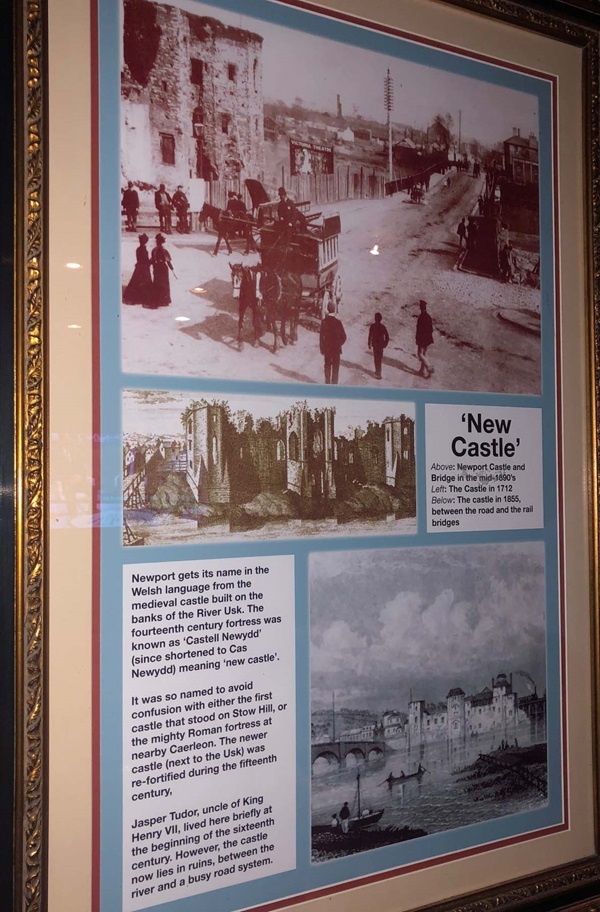
The text reads: Newport gets its name in the Welsh language from the medieval castle built on the banks of the River Usk. The fourteenth century fortress was known as Castell Newydd (since shortened to Cas Newydd) meaning ‘new castle’.
It was so named to avoid confusion with either the first castle that stood on Stow Hill, or the mighty Roman fortress at nearby Caerleon. The newer castle (next to the Usk) was re-fortified during the fifteenth century.
Jasper Tudor, uncle of King Henry VII, lived here briefly at the beginning of the sixteenth century. However, the castle now lies in ruins, between the river and a busy road system.
Above: Newport Castle and Bridge in the mid-1890s
Left: The castle in 1712
Below: The castle in 1855, between the road and the rail bridges.
External photograph of the building – main entrance.
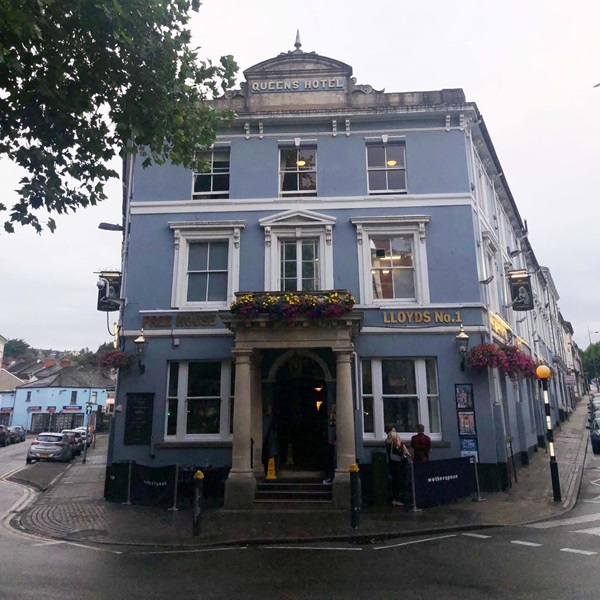
If you have information on the history of this pub, then we’d like you to share it with us. Please e-mail all information to: pubhistories@jdwetherspoon.co.uk